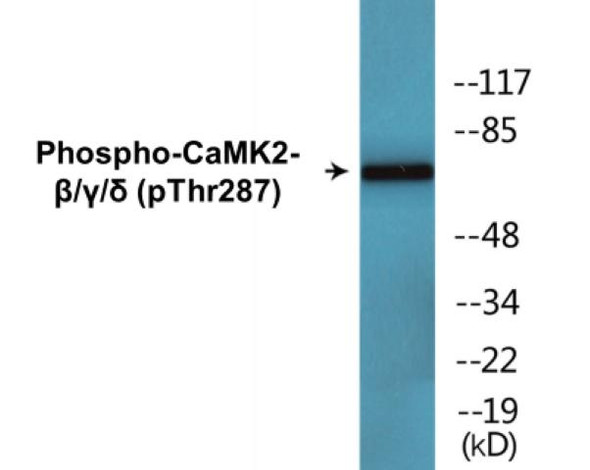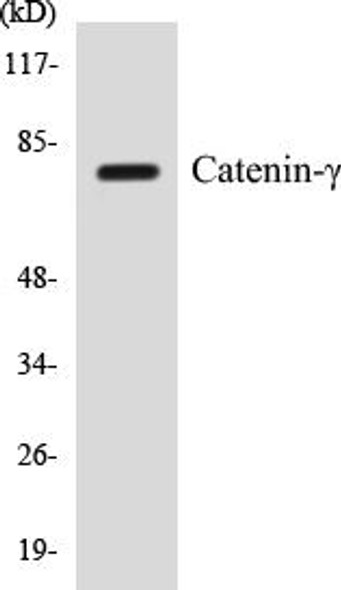Developmental Biology
CaMK2-beta/gamma/delta Colorimetric Cell-Based ELISA Kit
- SKU:
- CBCAB00560
- Product Type:
- ELISA Kit
- ELISA Type:
- Cell Based
- Research Area:
- Developmental Biology
- Reactivity:
- Human
- Reactivity:
- Mouse
- Reactivity:
- Rat
- Detection Method:
- Colorimetric
Description
| Product Name: | CaMK2-beta/gamma/delta Colorimetric Cell-Based ELISA |
| Product Code: | CBCAB00560 |
| ELISA Type: | Cell-Based |
| Target: | CaMK2-beta/gamma/delta |
| Reactivity: | Human, Mouse, Rat |
| Dynamic Range: | > 5000 Cells |
| Detection Method: | Colorimetric 450 nmStorage/Stability:4°C/6 Months |
| Format: | 96-Well Microplate |
The CaMK2-beta/gamma/delta Colorimetric Cell-Based ELISA Kit is a convenient, lysate-free, high throughput and sensitive assay kit that can detect CaMK2-beta/gamma/delta protein expression profile in cells. The kit can be used for measuring the relative amounts of CaMK2-beta/gamma/delta in cultured cells as well as screening for the effects that various treatments, inhibitors (ie siRNA or chemicals), or activators have on CaMK2-beta/gamma/delta.
Qualitative determination of CaMK2-beta/gamma/delta concentration is achieved by an indirect ELISA format. In essence, CaMK2-beta/gamma/delta is captured by CaMK2-beta/gamma/delta-specific primary antibodies while the HRP-conjugated secondary antibodies bind the Fc region of the primary antibody. Through this binding, the HRP enzyme conjugated to the secondary antibody can catalyze a colorimetric reaction upon substrate addition. Due to the qualitative nature of the Cell-Based ELISA, multiple normalization methods are needed:
| 1. | A monoclonal antibody specific for human GAPDH is included to serve as an internal positive control in normalizing the target absorbance values. |
| 2. | Following the colorimetric measurement of HRP activity via substrate addition, the Crystal Violet whole-cell staining method may be used to determine cell density. After staining, the results can be analysed by normalizing the absorbance values to cell amounts, by which the plating difference can be adjusted. |
| Database Information: | Gene ID: 816/818/817, UniProt ID: Q13554/Q13555/Q13557, OMIM: 607707/602123/607708, Unigene: Hs.351887/Hs.523045/Hs.144114 |
| Gene Symbol: | CAMK2B |
| Sub Type: | None |
| UniProt Protein Function: | CAMK2B: a widely expressed protein kinase of the calcium/calmodulin-dependent protein kinase (CAMK) group. Functions autonomously after Ca2+/calmodulin-binding and autophosphorylation. Involved in dendritic spine and synapse formation, neuronal plasticity and regulation of sarcoplasmic reticulum Ca2+ transport in skeletal muscle. In neurons, plays an essential structural role in the reorganization of the actin cytoskeleton during plasticity by binding and bundling actin filaments in a kinase-independent manner. This structural function is required for correct targeting of CaMK2A, which acts downstream of NMDAR to promote dendritic spine and synapse formation and maintain synaptic plasticity which enables long-term potentiation (LTP) and hippocampus-dependent learning. In developing hippocampal neurons, promotes arborization of the dendritic tree and in mature neurons, promotes dendritic remodeling. Participates in the modulation of skeletal muscle function in response to exercise. In slow-twitch muscles, is involved in regulation of sarcoplasmic reticulum (SR) Ca2+ transport and in fast-twitch muscle participates in the control of Ca2+ release from the SR through phosphorylation of triadin, a ryanodine receptor-coupling factor, and phospholamban, an endogenous inhibitor of SERCA2. The holoenzyme is composed of 4 different chains: alpha (CAMK2A), beta (CAMK2B), gamma (CAMK2G), and delta (CAMK2D). The different isoforms assemble into homo- or heteromultimeric holoenzymes composed of 12 subunits with two hexameric rings stacked one on top of the other. Interacts with SYNGAP1 and CAMK2N2. Interacts with MPDZ. Expressed in adult and fetal brain. Expression is slightly lower in fetal brain. Expressed in skeletal muscle and induced during exercise. Eight isoforms of the human protein are produced by alternative splicing |
| UniProt Protein Details: | Protein type:EC 2.7.11.17; Kinase, protein; Protein kinase, CAMK; Protein kinase, Ser/Thr (non-receptor); CAMK group; CAMK2 family Chromosomal Location of Human Ortholog: 7p14.3-p14.1 Cellular Component: nucleoplasm; sarcoplasmic reticulum membrane; plasma membrane; microtubule organizing center; spindle midzone; cytosol Molecular Function:calmodulin binding; protein homodimerization activity; calmodulin-dependent protein kinase activity; actin binding; ATP binding Biological Process: regulation of long-term neuronal synaptic plasticity; regulation of skeletal muscle adaptation; protein amino acid autophosphorylation; cytokine and chemokine mediated signaling pathway; regulation of calcium ion transport; signal transduction; protein amino acid phosphorylation; regulation of synaptic transmission, cholinergic; inhibitory G-protein coupled receptor phosphorylation; synaptic transmission; peptidyl-serine phosphorylation; response to cadmium ion; calcium ion transport; regulation of synapse structural plasticity; neuromuscular process controlling balance; G1/S transition of mitotic cell cycle |
| NCBI Summary: | The product of this gene belongs to the serine/threonine protein kinase family and to the Ca(2+)/calmodulin-dependent protein kinase subfamily. Calcium signaling is crucial for several aspects of plasticity at glutamatergic synapses. In mammalian cells, the enzyme is composed of four different chains: alpha, beta, gamma, and delta. The product of this gene is a beta chain. It is possible that distinct isoforms of this chain have different cellular localizations and interact differently with calmodulin. Alternative splicing results in multiple transcript variants. [provided by RefSeq, May 2014] |
| UniProt Code: | Q13554 |
| NCBI GenInfo Identifier: | 334302890 |
| NCBI Gene ID: | 816 |
| NCBI Accession: | Q13554.3 |
| UniProt Secondary Accession: | Q13554,O95437, O95438, O95599, Q9UGH7, A4D2K0, A4D2K1 A4D2K2, A4D2K3, A4D2K4, A4D2K5, A4D2K6, |
| UniProt Related Accession: | Q13554 |
| Molecular Weight: | 664 |
| NCBI Full Name: | Calcium/calmodulin-dependent protein kinase type II subunit beta |
| NCBI Synonym Full Names: | calcium/calmodulin-dependent protein kinase II beta |
| NCBI Official Symbol: | CAMK2B |
| NCBI Official Synonym Symbols: | CAM2; CAMK2; CAMKB |
| NCBI Protein Information: | calcium/calmodulin-dependent protein kinase type II subunit beta; caMK-II subunit beta; CaM-kinase II beta chain; CaM kinase II beta subunit; proline rich calmodulin-dependent protein kinase |
| UniProt Protein Name: | Calcium/calmodulin-dependent protein kinase type II subunit beta |
| Protein Family: | 6-oxocamphor hydrolase |
| UniProt Gene Name: | CAMK2B |
| UniProt Entry Name: | KCC2B_HUMAN |
| Component | Quantity |
| 96-Well Cell Culture Clear-Bottom Microplate | 2 plates |
| 10X TBS | 24 mL |
| Quenching Buffer | 24 mL |
| Blocking Buffer | 50 mL |
| 15X Wash Buffer | 50 mL |
| Primary Antibody Diluent | 12 mL |
| 100x Anti-Phospho Target Antibody | 60 µL |
| 100x Anti-Target Antibody | 60 µL |
| Anti-GAPDH Antibody | 60 µL |
| HRP-Conjugated Anti-Rabbit IgG Antibody | 12 mL |
| HRP-Conjugated Anti-Mouse IgG Antibody | 12 mL |
| SDS Solution | 12 mL |
| Stop Solution | 24 mL |
| Ready-to-Use Substrate | 12 mL |
| Crystal Violet Solution | 12 mL |
| Adhesive Plate Seals | 2 seals |
The following materials and/or equipment are NOT provided in this kit but are necessary to successfully conduct the experiment:
- Microplate reader able to measure absorbance at 450 nm and/or 595 nm for Crystal Violet Cell Staining (Optional)
- Micropipettes with capability of measuring volumes ranging from 1 µL to 1 ml
- 37% formaldehyde (Sigma Cat# F-8775) or formaldehyde from other sources
- Squirt bottle, manifold dispenser, multichannel pipette reservoir or automated microplate washer
- Graph paper or computer software capable of generating or displaying logarithmic functions
- Absorbent papers or vacuum aspirator
- Test tubes or microfuge tubes capable of storing ≥1 ml
- Poly-L-Lysine (Sigma Cat# P4832 for suspension cells)
- Orbital shaker (optional)
- Deionized or sterile water
*Note: Protocols are specific to each batch/lot. For the correct instructions please follow the protocol included in your kit.
| Step | Procedure |
| 1. | Seed 200 µL of 20,000 adherent cells in culture medium in each well of a 96-well plate. The plates included in the kit are sterile and treated for cell culture. For suspension cells and loosely attached cells, coat the plates with 100 µL of 10 µg/ml Poly-L-Lysine (not included) to each well of a 96-well plate for 30 minutes at 37°C prior to adding cells. |
| 2. | Incubate the cells for overnight at 37°C, 5% CO2. |
| 3. | Treat the cells as desired. |
| 4. | Remove the cell culture medium and rinse with 200 µL of 1x TBS, twice. |
| 5. | Fix the cells by incubating with 100 µL of Fixing Solution for 20 minutes at room temperature. The 4% formaldehyde is used for adherent cells and 8% formaldehyde is used for suspension cells and loosely attached cells. |
| 6. | Remove the Fixing Solution and wash the plate 3 times with 200 µL 1x Wash Buffer for five minutes each time with gentle shaking on the orbital shaker. The plate can be stored at 4°C for a week. |
| 7. | Add 100 µL of Quenching Buffer and incubate for 20 minutes at room temperature. |
| 8. | Wash the plate 3 times with 1x Wash Buffer for 5 minutes each time. |
| 9. | Add 200 µL of Blocking Buffer and incubate for 1 hour at room temperature. |
| 10. | Wash 3 times with 200 µL of 1x Wash Buffer for 5 minutes each time. |
| 11. | Add 50 µL of 1x primary antibodies (Anti-CaMK2-beta/gamma/delta Antibody and/or Anti-GAPDH Antibody) to the corresponding wells, cover with Parafilm and incubate for 16 hours (overnight) at 4°C. If the target expression is known to be high, incubate for 2 hours at room temperature. |
| 12. | Wash 3 times with 200 µL of 1x Wash Buffer for 5 minutes each time. |
| 13. | Add 50 µL of 1x secondary antibodies (HRP-Conjugated AntiRabbit IgG Antibody or HRP-Conjugated Anti-Mouse IgG Antibody) to corresponding wells and incubate for 1.5 hours at room temperature. |
| 14. | Wash 3 times with 200 µL of 1x Wash Buffer for 5 minutes each time. |
| 15. | Add 50 µL of Ready-to-Use Substrate to each well and incubate for 30 minutes at room temperature in the dark. |
| 16. | Add 50 µL of Stop Solution to each well and read OD at 450 nm immediately using the microplate reader. |
(Additional Crystal Violet staining may be performed if desired – details of this may be found in the kit technical manual.)






